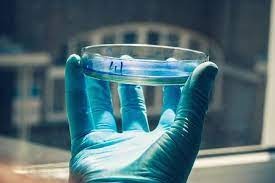Lacrimal gland or tear gland is generally found in terrestrial vertebrates and some marine mammals which keeps the eyes moist and produces tears through the lacrimal ducts. It helps to show our emotions, protect the eyes from external harmful things, and also from various other diseases. Eyes are said to be the windows to our soul and only through the vision and other tests of eyes, doctors can check the overall health of human beings and also detect diseases like diabetes, skin cancer, brain tumor, and many more. The health of eyes and eye tissues talk about the health of a human being.
Tears are produced in the lacrimal gland and drain out from the tears duct to the nose. There is a chain process that happens from the production of tears to the drain out of the body. All the processes include chemical reactions in the body, brain chemicals called neurotransmitters that react and also link to the brain that controls the emotions of human beings. It also involves the Pax6 gene that controls the development of the eyes and their related functions.
There are many cases where the lacrimal gland is not able to function properly and produce tears. It leads to many diseases due to dryness of the eye surface which may lead to blindness in many people. They say that people with this disease lack the Pax6 gene in their bodies which becomes even more difficult to treat for this disease. Scientists and doctors are working on these diseases to find a remedy and finally, they have come up with a solution and research papers have been published and tests have been conducted on mice.
Scientists have grown tear glands that are the lacrimal gland artificially in laboratories in Petri dishes. The tear gland produced in the lab will be the cells derived from human beings and other cells and chemicals will be combined with them and will become the three-dimensional conglomeration of cells of the miniature versions of human organs.
The scientists in the Netherlands divided the study into 3 parts. They say that growing the organoids was not a difficult task but to make them cry was a challenging task as the fusion of the right chemicals was a must. Once that was done and it was ready for testing they realized that it is not completely performing its functions as the natural gland. It produced tears but could not drain out the tears from the tear ducts. The scientists reworked on this and found a solution for this too.
This is another achievement in the world of science as another disease will be cured soon if only it works the same way it is working on mice. The chemicals and genes missing in human beings will be fused in the organoids so that they will perform in a similar manner as a natural gland would perform.

